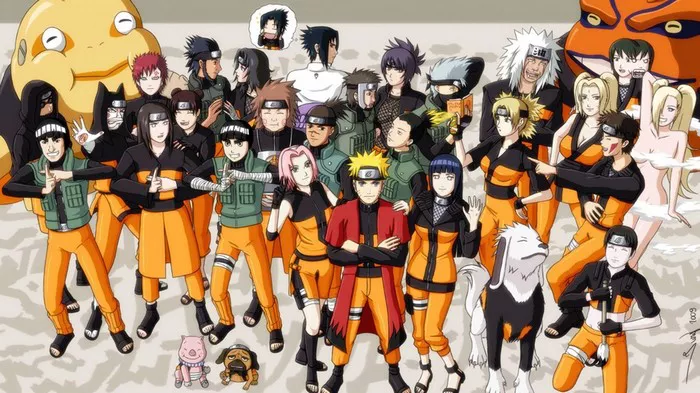When diving into the realm of anime, two titles frequently surface as titans of the genre: “Naruto” and “One Piece. Both series have carved substantial niches within the hearts of anime fans worldwide, sparking debates and discussions about which series stands supreme. Each offers unique storytelling elements, deep character development, thematic richness, and extensive worlds that captivate audiences for hundreds of episodes. This article aims to delve into various aspects of both series, comparing their strengths and weaknesses to determine which might hold the title of the better anime.
The Origins and Creators
Naruto, created by Masashi Kishimoto, was first published in 1999 in Weekly Shonen Jump, a popular manga anthology published by Shueisha. It ran until 2014, completing 72 volumes. The story follows Naruto Uzumaki, a young ninja with dreams of becoming the strongest leader in his village—the Hokage—and gaining the respect of his peers.
One Piece, on the other hand, was created by Eiichiro Oda and began serialization in Weekly Shonen Jump in 1997. It is still ongoing and holds the Guinness World Record for the most copies published for the same comic book series by a single author. The narrative chronicles the adventures of Monkey D. Luffy and his pirate crew in their quest to find the ultimate treasure, the One Piece, to become the Pirate King.
Plot and Setting
Naruto
The plot of “Naruto” is segmented into two parts: the first focuses on the younger versions of the characters, primarily through their various ninja missions and exams, while the second part, known as “Naruto Shippuden,” deals with more mature themes as the characters grow older and face more severe threats. A significant theme in “Naruto” is the struggle against destiny, the importance of bonds, and the pain of loneliness.
One Piece
“One Piece” spans several islands and seas, each with its own unique cultures, races, and conflicts. The overarching quest is to find the One Piece, but the series is much more than just a treasure hunt. It delves deeply into themes of dreams, freedom, and the ambiguity of morality.
Character Development
Naruto
“Naruto” is renowned for its extensive character development. Characters like Naruto himself evolve from a lonely, ostracized child into a powerful and respected leader. Sasuke Uchiha, his rival and friend, presents a complex story of revenge and redemption. Each supporting character has a well-defined backstory contributing to their motives and personality.
One Piece
Character development in “One Piece” is similarly complex, with Luffy’s crewmates each having distinct backstories that motivate their actions and development. Unlike “Naruto,” where characters’ motivations are often entwined with their past traumas, “One Piece” characters are more driven by future aspirations and dreams.
World-Building
Naruto
The world of “Naruto” is structured around ninja villages, each with its unique characteristics and politics. The world-building can be intricate, with detailed lore about different ninja techniques and the history of the ninja world.
One Piece
The world-building in “One Piece” is arguably more expansive and varied than in “Naruto.” Oda has created a world with diverse environments, cultures, and political systems, all interconnected in a complex web of alliances and enmities that fuel the series’ numerous plots and subplots.
Art Style and Animation
“Naruto” and “One Piece” both started around the same time, and thus, their earlier episodes show signs of the animation style of the late 90s and early 2000s. However, both series see significant improvements in animation quality as they progress.
Naruto
The art style in “Naruto” matures significantly in “Naruto Shippuden,” reflecting the characters’ growth and the darker tone of the series. The animation, especially during critical battle scenes, is highly praised for its detail and fluidity.
One Piece
“One Piece” retains a more consistent art style, characterized by its bright colors and exaggerated expressions and actions, fitting its adventurous and often whimsical tone. However, some fans critique the animation consistency, noting varying quality across episodes.
Impact and Legacy
Both series have left a considerable mark on the anime industry and have large, dedicated fanbases worldwide. “Naruto” has inspired numerous adaptations, including movies, novels, and video games. Similarly, “One Piece” has expanded into a media franchise including films, video games, and even a forthcoming live-action series.
Personal Preference and Cultural Impact
Naruto
“Naruto” has been particularly influential in the West, often credited with being a gateway anime for many fans. Its themes of perseverance, friendship, and redemption resonate widely with audiences around the globe.
One Piece
While “One Piece” is immensely popular internationally, it boasts unparalleled popularity in Japan, outselling other manga titles by significant margins. Its story of adventure and the pursuit of dreams appeals universally, and its longevity is a testament to its quality and appeal.
Conclusion
Determining which is “better” between “Naruto” and “One Piece” largely boils down to personal preference. Those who prefer tightly-knit, character-driven stories might lean towards “Naruto.” In contrast, fans who enjoy expansive world-building and adventure might prefer “One Piece.” Both series offer rich experiences and have qualities that make them stand out in the anime world. Thus, rather than declaring a definitive winner, it is perhaps best to appreciate each for its unique contributions to the world of anime and manga.

